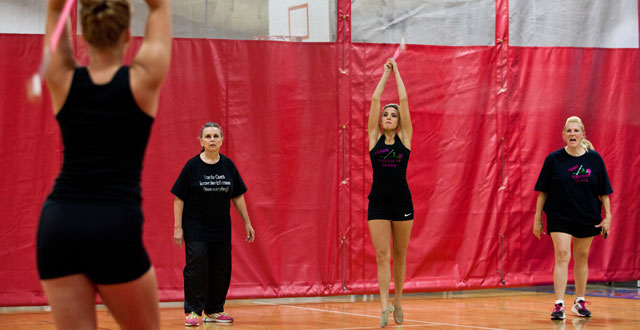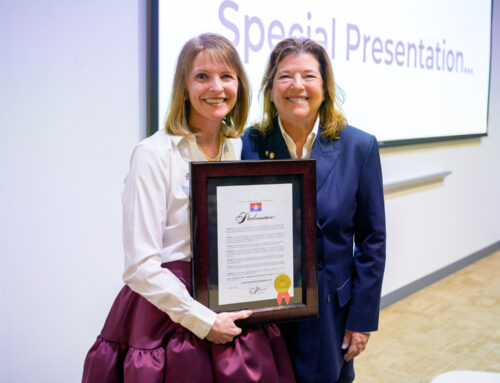
Lakewood neighbors Shirley Payne and Sheila Rigelsky help students perfect their twirling skills: Photo by Kim Leeson.
Sweat, tears and sequins. That’s what the lives of Lakewood neighbors Shirley Payne and Sheila Rigelsky revolve around.
The mother-daughter duo teaches competitive baton twirling, and if you don’t think baton twirling is a sport, then you’ve never met their students.
Their students put in hours of practice every day, and some of them have been taking classes from one or both of the teachers for several years.
When most people think of twirling, they think of twirlers marching along with the band during halftime, spinning, dancing and flipping a shiny baton. Although that’s an important part of twirling, many serious twirlers aim to win trophies in local, state, regional and national twirling competitions.
“It’s all about competition,” Payne says.
“It’s a lot of fun, too,” Rigelsky says. “We always say that twirling teaches so much more than how to spin a shiny stick. It’s time management, it’s self-confidence and personal presentation, and it’s good physical activity.”
Shirley Payne began twirling at 10 years old. Her father loved football, but he didn’t want her to be involved in cheerleading or drill team, and she was already taking dance. She began competing around the time she was in high school, and she began coaching around 18.
“Fifty years later, I’m still coaching,” Payne says. “I’ve retired twice, and here I am again.”
“I keep pulling her back,” Rigelsky jokes.
Rigelsky grew up around the world of twirling, but originally Payne didn’t want her to twirl. Payne had a twirling studio and a core of 50 twirlers. Plus, Rigelsky’s older sister was a competitive twirler, so Payne simply didn’t have the time to train another one. But some of Payne’s students took Rigelsky aside, taught her the basics, and put her in front of Payne to showcase her newly acquired twirling skills.
When Rigelsky was 15, Payne turned over one of her teams to Rigelsky for her to coach.
“I’ve been teaching ever since,” Rigelsky says. “We have our own students, and we have students together. We have students who are the same ages and in the same divisions.”
The pair is very competitive — not just with others, but also with each other. Both agree that the competitive spirit is what fuels them — or rather, winning over and over again.





